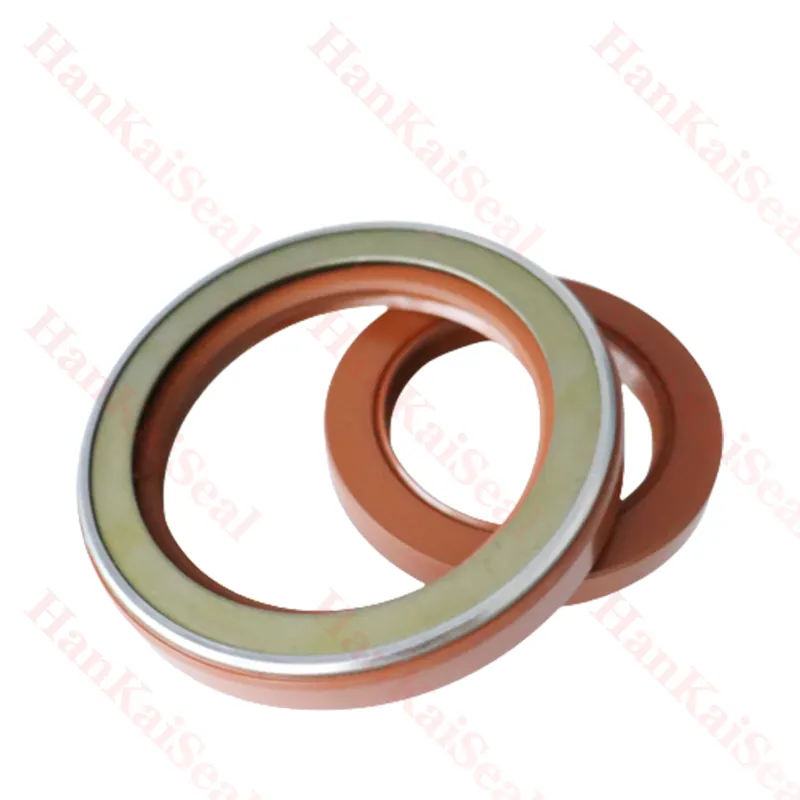Novemba . 05, 2024 23:42 Back to list
gear box oil seal
Understanding Gearbox Oil Seals Importance and Maintenance
In the world of automotive engineering, one component that plays a crucial role in ensuring smooth and efficient performance is the gearbox oil seal. While often overlooked, these seals are vital for maintaining the integrity of the gearbox and preventing leaks that can lead to significant issues if not addressed promptly.
What is a Gearbox Oil Seal?
A gearbox oil seal is a crucial component designed to prevent the escape of lubricating oil from the gearbox and protect the internal components from dirt and moisture. Typically made from rubber or synthetic materials, these seals fit snugly around the input and output shafts of the gearbox, creating a tight barrier. This barrier is essential for maintaining proper lubrication within the gearbox, which is necessary for smooth operation and longevity of the system.
The Importance of Oil Seals
The gearbox is subject to high levels of friction and heat, which can cause wear over time. A functioning oil seal helps to maintain the right level of lubrication, ensuring that moving parts work together without unnecessary friction. If an oil seal fails, it can lead to oil leaks. These leaks not only reduce the effectiveness of lubrication but can also result in the gearbox overheating, leading to catastrophic failure.
Moreover, a compromised oil seal allows dirt, dust, and moisture to enter the gearbox, which can contaminate the oil. Contaminated oil can cause abrasive wear on gears and other internal components. Regular inspections of the gearbox oil seals can prevent these issues, extending the life of the gearbox and improving overall vehicle performance.
Signs of a Failing Oil Seal
gear box oil seal

Recognizing the signs of a failing oil seal is crucial for early intervention. Common indications include
1. Oil Leaks Puddles or spots of oil under the vehicle may signal a leaking seal. 2. Decreased Lubrication Levels Regularly checking the gearbox oil level can help detect leaks early. 3. Unusual Noises Grinding or whining sounds from the gearbox may indicate a lubrication issue due to oil seal failure. 4. Contaminated Oil Dark, gritty oil when changing the gearbox oil can signify that dirt has entered the system.
Maintenance Tips
To ensure the longevity and effectiveness of gearbox oil seals, consider the following maintenance tips
1. Regular Inspections Check your vehicle's oil seals periodically, especially during routine oil changes. 2. Use Quality Oil High-quality lubricants can minimize wear and maintain a better seal. 3. Address Leaks Promptly If you notice any signs of leaking, address them immediately to prevent further damage. 4. Proper Installation Ensure that seals are installed correctly to prevent premature failure.
Conclusion
In conclusion, gearbox oil seals are a small but mighty component in automotive machinery. Their role in preventing oil leaks and protecting internal components from contamination cannot be overstated. By understanding their importance and maintaining them properly, vehicle owners can enhance the performance and lifespan of their gearboxes. Regular inspections and prompt repairs will go a long way in ensuring that everything runs smoothly, keeping you and your vehicle on the road without worry.
-
The Trans-formative Journey of Wheel Hub Oil Seals
NewsJun.06,2025
-
Graphene-Enhanced Oil Seals: Revolutionizing High-Pressure Oil Sealing
NewsJun.06,2025
-
Future of Hydraulic Sealing: Advanced Intelligent TCN Oil Seals
NewsJun.06,2025
-
Don’t Let a Broken TCV Oil Seal Ruin Your Day
NewsJun.06,2025
-
Bio-Inspired Dust Seals for Better Sealing Performance
NewsJun.06,2025
-
Biodegradable and Sustainable Hydraulic Seal Materials
NewsJun.06,2025
-
Top Oil Seal Solutions for Your Industrial Needs
NewsMay.22,2025
Products categories
















